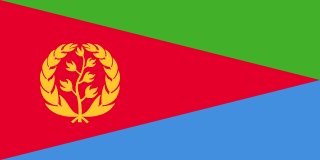Eritrea - Environment

As far as the environment of Eritrea is concerned, there have been . As for nvironment - international agreements, we have; .
About the environment of Eritrea
| Climate | We have hot, dry desert strip along Red Sea coast; cooler and wetter in the central highlands (up to 61 cm of rainfall annually, heaviest June to September); semiarid in western hills and lowlands |
|---|---|
| Revenue from forest resources | |
| Revenue from coal | |
| Waste and recycling | Municipal solid waste generated annually: 727,000 tons (2024 est.) |
| Total renewable water resources | 7.315 billion cubic meters (2022 est.) |
| Major rivers (by length in km) | |
| Total water withdrawal | |
| Municipal | 31 million cubic meters (2022 est.) |
| Industrial | 1 million cubic meters (2022 est.) |
| Agricultural | 550 million cubic meters (2022 est.) |
| Land Use | |
| Agricultural land | 62.7% (2023 est.) |
| Agricultural land: arable land | arable land: 5.7% (2023 est.) |
| Agricultural land: permanent crops | permanent crops: 0% (2023 est.) |
| Agricultural land: permanent pasture | permanent pasture: 56.9% (2023 est.) |
| Forest | 12% (2023 est.) |
| Other | 25.3% (2023 est.) |
| Urbanization | |
| Urban population | 43.3% of total population (2023) |
| Rate of urbanization | 3.67% annual rate of change (2020-25 est.) |
| Major urban areas (Pop) | 1.073 million ASMARA (capital) (2023). |
All Important Facts about Eritrea
Want to know more about Eritrea? Check all different factbooks for Eritrea below.









